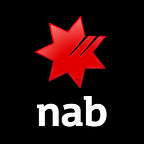Infrastructure in the new age: NAB’s journey to the public cloud
Rather than sinking resources into keeping the lights in a private cloud environment, we are fully embracing the public cloud — letting the cloud giants do what they do best, while we invest in the future and focus on meeting our customers’ needs.
There’s really no such thing as a ‘private cloud’; there’s the public cloud and there’s managed hosting. Private cloud really just means managed internal hosting, where you lose many of the benefits of the public cloud.
What people refer to as the ‘private cloud’ is not nearly as scalable, elastic or customisable as the public cloud. It leaves the operations teams securing the perimeter and maintaining the infrastructure — when they could be focused instead on innovating and delivering more for customers, while leveraging the world-class infrastructure and security public cloud providers have.
What our customers do care about is secure and reliable services.
The best way to achieve this is with the public cloud. By leveraging the scale of the world’s cloud leaders, NAB can provide far better security, resilience and performance than through on-premise systems. Adopting this approach enables us to move much faster, to be more agile and more resilient, all without having to make large upfront capital purchases.
Going public
Today, banks are understandably slow and cumbersome when it comes to IT. We’re a 160-year-old organisation; it’s extremely hard to be agile with an infrastructure that’s physical in nature and has a lot of processes around systems built up over many years of technology and regulatory change. Once we start to move to ‘infrastructure as code’, we can be far more agile in our approach.
We initially plan to move 35% of our infrastructure into the public cloud, and much more in the long term. We will consult with our regulators at a speed they’re comfortable with, it’s important to us — we’ve invested heavily to work with our regulators on the journey so far and committed to this lock-step approach in the future.
In return, the public cloud will enable us to develop products and services more quickly, products that are far more in tune with new technology and what customers are asking for.
NAB’s program to test out the possibility of using machine learning and facial recognition for ATMs recently made headlines. We built a demo (at the Sibos global finance exhibition of technology) that lets customers withdraw cash without a card or their phone. While it was just a proof of concept, we were able to build that entire environment in a very short space of time — effectively days. We didn’t need to create an entire facial recognition platform — instead, we leveraged the machine learning capabilities already within Microsoft Azure.
The same goes for NAB’s data lake built on AWS, letting us make the most of the bank’s structured and unstructured data. While you could deploy this kind of technology on other styles of cloud infrastructure, the public cloud lets us take advantage of the impressive data analytics AWS has rather than trying to reinvent the wheel ourselves.
Greater efficiency
Some people might argue that the ‘hybrid cloud’ offers the best of both worlds, by combining privately managed and public. I would argue that you’re watering down the right solution by bringing in the private element.
Some might argue for storing specific data internally but, with the right strategy, keeping your data secure with a major cloud provider is far more effective, particularly if you invoke a multi-cloud solution that takes advantage of several key cloud players.
A multi-cloud solution doesn’t need to add complexity, not if you architect your solutions appropriately. Once infrastructure is actually code, much of that infrastructure can be replicated easily from one cloud service to another.
In terms of data jurisdiction, all the major cloud providers now have Australian operations and allow you to choose where your data is held. This provides choices and control over data location to meet obligations and business requirements.
Embracing change
We continue to work closely with our regulators on our approach — a crucial approach as cloud technology’s advanced.
As our industry and the environment constantly changes, business leaders are eager to learn more about the benefits cloud technology can bring. The NAB board is leaning in to the technology. We took the entire board to Silicon Valley earlier this year to meet with Google, Microsoft and Amazon, where they were able to gain a real appreciation for where the benefits lie.
The public cloud is not an experiment, nor is it a flash in the pan. Instead, it’s an evolution of how businesses consume IT moving forward. While NAB doesn’t necessarily want to be on the bleeding edge, we certainly want to be at the forefront if we’re to compete within the Australian market. We have a big program of work coming up and we’re genuinely excited about what the future is looking like.
If you’re interested in joining us on the ride, you can learn more about working in technology at NAB here.
About the author: Steve Day is NAB Executive General Manager for Infrastructure, Cloud and Workplace. Before joining NAB, Steve held senior positions at Telstra and Amazon Web Services.
